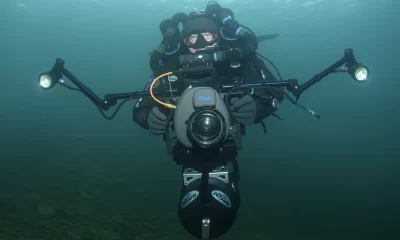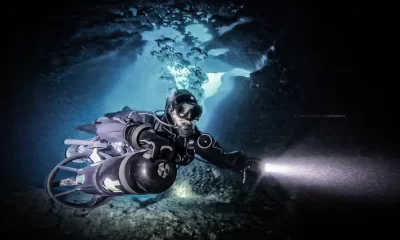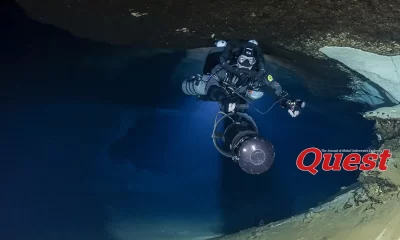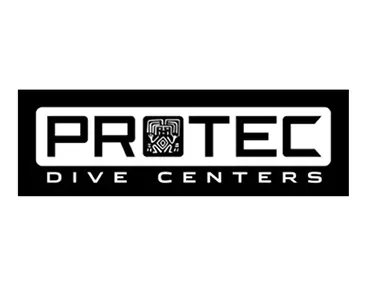Community
The Who’s Who of Sidemount

Audrey Cudel
Audrey is a consummate sidemount diver and instructor, and also an underwater photographer. She is known for her attention to detail and supreme in-water ability that makes her a role model for other sidemount divers to follow. Find her at Audrey Cudel Technical.
Interview by Michael Menduno
What is sidemount to you?
I’m always surprised by this kind of question about sidemount because we never really ask what is single tank diving, what is twin set diving. They apply to different diving activities you want to do, and that’s what sidemount is for me, just a configuration. Of course, I love the configuration. When I started doing deep technical diving I was on twin sets and I still really enjoy that but I don’t do it much anymore. Sidemount is simply a configuration. It’s useful for people who might have back problems, for instance, or people who have tricky entrances to deal with. Sometimes sidemount is a more suitable configuration for that. But not always.
Is sidemount a settled system? Is it still evolving?
The philosophy of sidemount has not changed for some years now. And in this sense, no, it’s not changing or improving. What has been improving throughout the past years are the different systems which are out on the market. What has not really changed much are the two philosophies of sidemount that appeared. Both philosophies are valid to me.
You’re referring to the evolution of sidemount shaped by Florida and Mexico? We have an article on that in this issue.
There was also a very interesting article written in “Wet Notes” about these two philosophies of sidemount probably 10 years ago. The article described the purpose of the two systems and what Steve [Bogaerts] had been developing. The article could be published today.
All the main brands, the diving equipment brands, think that they created sidemount systems. But when it comes to valid systems, in my experience, the facts are known. Many are not good at designing sidemount stuff. A few brands made a reputation because of sidemount, while also developing other equipment on the side. But they are known for their sidemount equipment which is very good. For me, the two main brands on the market are Razor and xDeep.

Was there an epiphany moment for you with sidemount?
Yes. Actually, it was the day I thought I had invented sidemount; I had no clue it already existed on the market. At the time, around 2010, I was working at our dive center training on the Red Sea every day on twin sets with a lot of stages and configurations. And at the end of a shallow training dive, 10 meters/33 feet for two hours, we came back up the hill to the dive center when one diver realized he had lost his knife and he had already removed his suit. I still had my wetsuit on—at the time I was diving in a wetsuit—and I said well, I’m going to go search for it. It can’t be that far away because we stayed in the same area. There was no way I would put the twin set back on my back. So, I picked up a 7 liter aluminum stage that had a regulator on. I knew my weights. I entered the water and after a few minutes even though I didn’t find the knife I had a mixed sensation of diving and freediving, so much freedom! I was just holding the cylinder under my arm which felt a little bit unbalanced. But I don’t know, it triggered something.
What happened?
I like to modify objects and turn them into something new, different. So, back at the dive center, I started thinking, “okay this was great, I’d like to repeat it! But it’s not balanced, so I need to use a second cylinder”. At the same time, I had to attach them to myself. The idea came from free diving. Free divers are using this kind of thick rubber belt. If I would use a rubber belt and I put it around my shoulders, behind my neck, it’s going to be somehow secured on the suit. It’s not regular webbing, it’s not going to move around. I could set this up on top and then do the same around my hips. I’m going to put on straps. It was my own homemade harness!
I put two D rings on top, on the shoulder part and two D rings on my hips. I used regular stage rigging on the stages and I started playing around with it. So it became kind of a trend at the time in the hub. There was no side mount, nobody was diving sidemount. My partner at the time thought that the idea was cool as well, so he took his old MARES BCD, removed all the plastic parts from it, and then just set it up the same way with D rings on the top, D rings on the sides. We were just having fun.

Then I realized, okay, in terms of safety, we don’t have any buoyancy system included. So, my idea at the time was simply to integrate a camel bag. You know the camel bag you are drinking from, as a buoyancy device. As a runner, I had a good knowledge about camel bags and I knew the kind of design you could find on the market. Shortly after that Hollis entered the market with their SMS 100 system, which was kind of a bulky hybrid system. We ordered one, and then the Razor system and others. And so, we eventually ended up with a variety of sidemount systems to test at the dive center.
You were working with both DIY and branded systems?
Yes, a lot of people were making their own things, and many still do, some still using a bicycle inner tube. I find it very funny that people are so obsessed with the beauty of sidemount, how the configuration looks, how to streamline everything. Sidemount serves a purpose. It does not always really matter what it looks like. Of course, it’s better if it looks nice, like everything in life. But if it makes your life easier, that’s what really matters.
Return to: The Who’s Who of Sidemount
DIVE DEEPER
Speaking Sidemount: E010 – Audrey Cudel Interview
Speaking Sidemount: E043 – Turning the Tables – Steve Davis with Audrey CudelSpeaking Sidemount: E076 Looking Back – The Best of Speaking Sidemount





















































